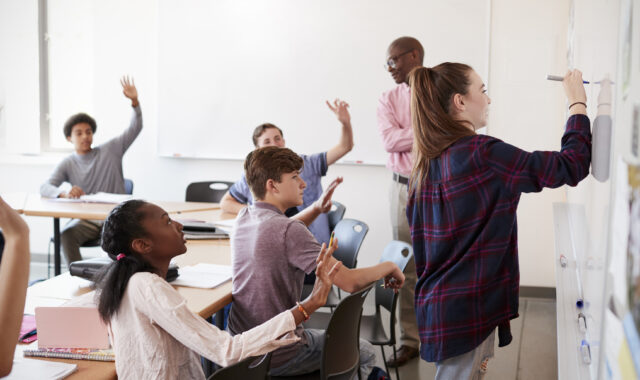Contents:
The summer holidays are over too soon and September is now upon us. Where did it all go? The six weeks, which were craved and earnestly waited for by all connected within the school community, have come and gone…all in a flash. And here we go again…the beginning of another school year!
The start of a new academic year comes with mixed emotions for both teachers and students. For both parties, the long wait is over: teachers and students will be reunited with colleagues, peers, and friends.
Some of your classes will be the same as last year. For many teachers, this can be advantageous; you already know the class and are familiar with the class dynamics. For others, carrying over a previous class is not always welcome news, particularly if the student-teacher bond hasn’t been great. Familiar faces aside, most teachers will be assigned a new cohort of students or a new mix of classes.
The dynamics of each class is a function of the mix of personalities and characters in the group. As the year goes on, the direction in which this evolves will be driven by features such as academic abilities, social factors, friendship groups, emotional literacy, and behavioural impacts. Teaching any new class will initially present its peculiar challenges but, once you get the simple things right, it can be extremely rewarding.
Who’s who: the importance of a seating plan
The first challenge is knowing who is who. If you’re lucky enough to get your class lists at the end of the summer term, then this information can be put to good use. Personally, I try to study the class lists as soon as I have them, and certainly before my first lesson. Simple things like having a seating plan will enable you to use the names of your students more often in the lesson. This is very powerful. Using names builds relationships very quickly and shows the students that you care. Moreover, a seating plan will give the students a sense of belonging.
It’s important to remember that it will take time to build a relationship with any new class. Recognising each student as an individual and making a concerted effort to get to know them will help to smooth any potential bumps in the road.

Establish a routine
Establishing a routine with your class is imperative to ensure that your students know, in clear and simple terms, what your expectations are. It provides a fair, safe, and secure learning environment for everyone. A set routine also provides clear guidelines and boundaries for the class to follow. Setting expectations from the onset can assist in effective behaviour management; students know what you stand for and what you expect from them.
Catch up with previous teachers
With a new class comes the opportunity to provide excitement, experience new adventures, and test out new ideas. However, it is important to acknowledge that some classes may still be attached to their previous teacher and their teaching style. Change for some students can be a tall order. It may be a good idea to communicate with their previous teacher and find out what teaching strategies work best for the class. They may be able to give you practical tips that will save you time in the long run. Having said that, it is vital that you establish your own identity and don’t live in the shadow of the previous teacher.
First impressions count
The first impression that you make on your new class is very important. Remember that your students are making a judgement as to how they envisage the whole year panning out. It is key that you set a positive tone from the beginning. Be approachable and supportive, and build positive relationships.
So, although there are no set rules as to how you should set the ball rolling with a new class, there are a few simple things you can do that can really make the difference between “my new teacher is really cool and I think I’m going to enjoy this subject this year” and “I wish I still had my previous teacher”.








This is awesome piece. I have particularly understood the importance of seating plan better.